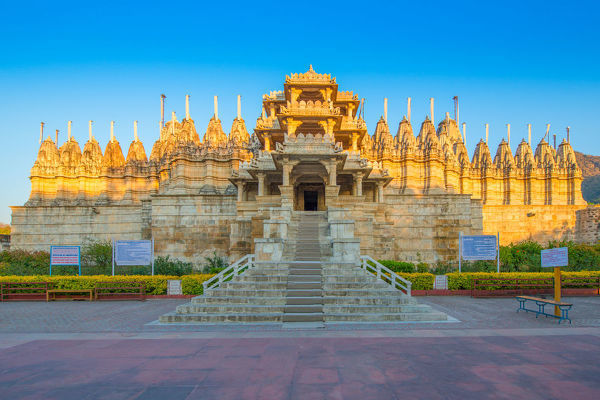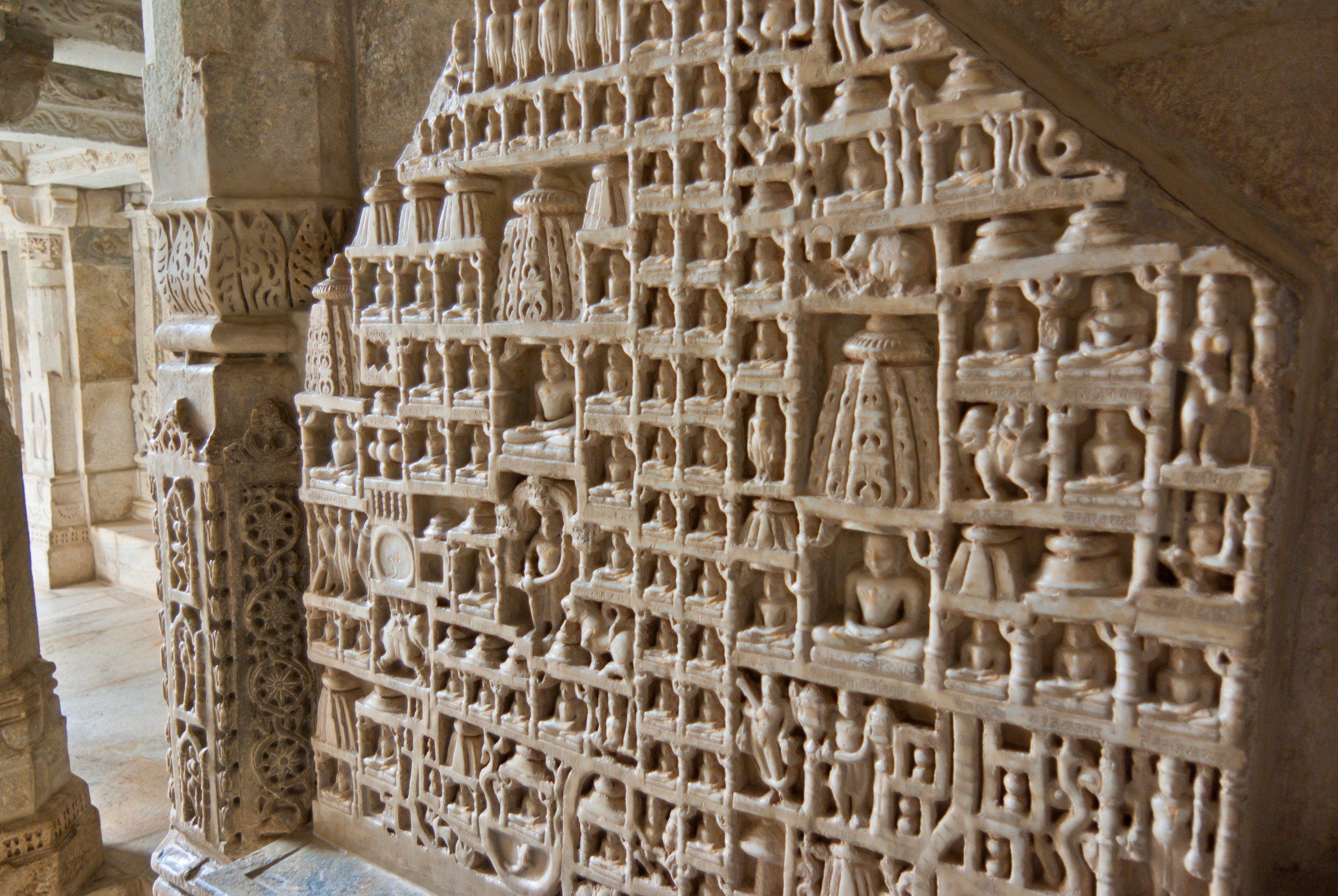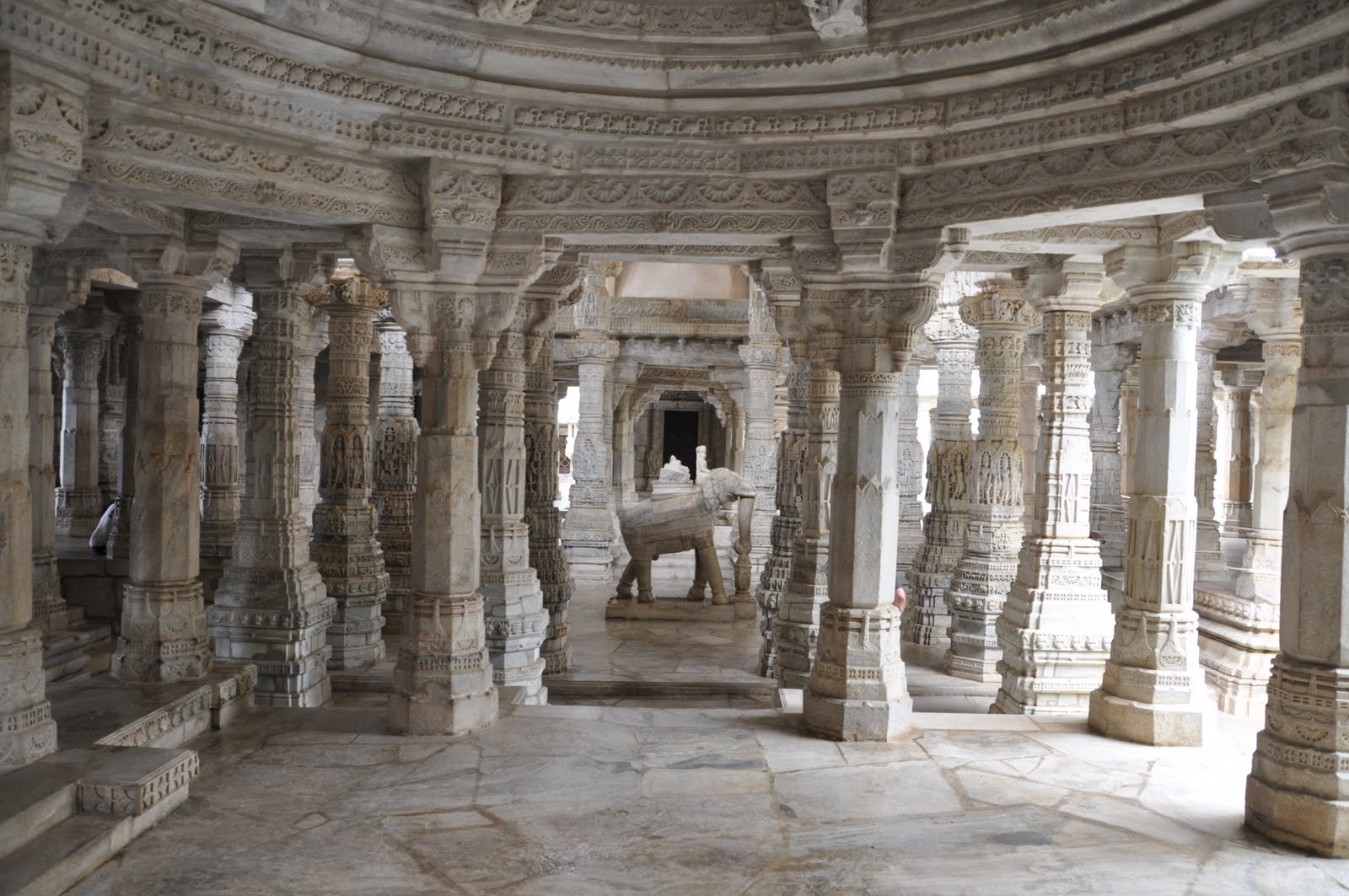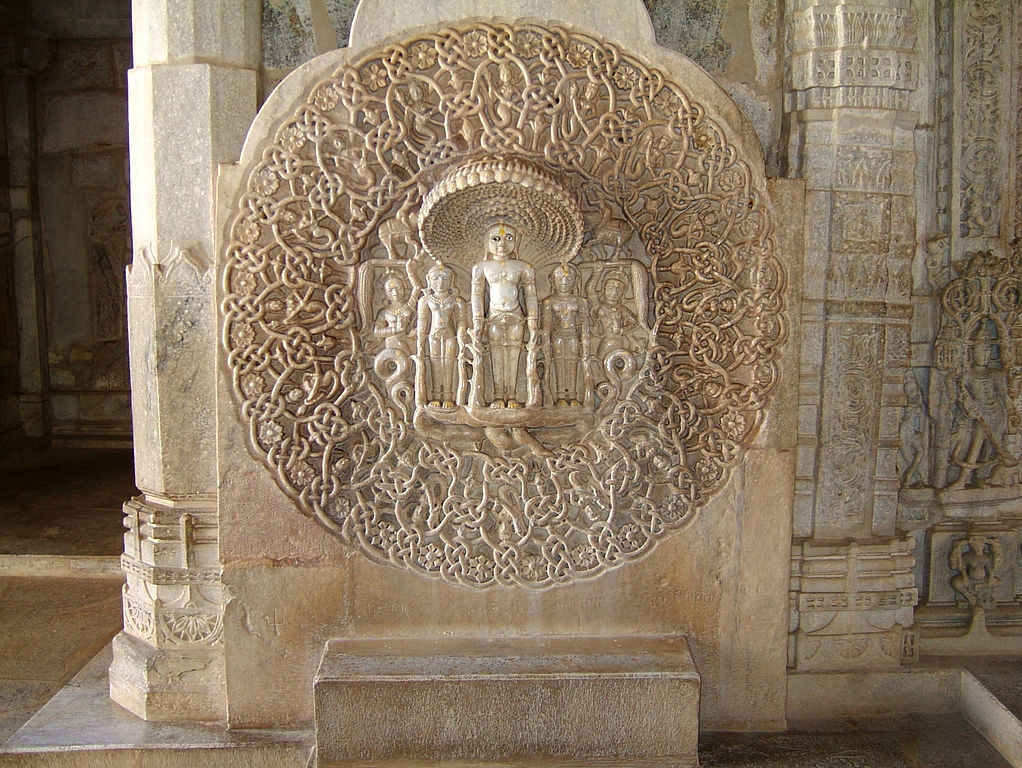Ranakpur




Spectacular, Magnificent and Majestic. These are the words that come to mind when you first look at the Ranakpur Jain Temple. A light colored marble temple set against the backdrop of brown hills of Aravali range in India. Old trees and vegetation around the temple add a bit of yellow and green and make this entire place something out of this world. Why would someone build such a beautiful building in a remote place, where few people will appreciate its beauty? As you climb the steps to enter this 3-story structure, you enter a huge open hall with lots and lots of pillars. Carved out of soft white marble, each pillar is an art in itself. Some have intricate floral designs and some others have murals of Jain dignitaries. But no two pillars are alike. What are these pillars trying to convey? And why are there so many pillars? Over fourteen hundred and forty but no one has claimed to know the exact number of pillars. It is so hard to count them. Peaceful, Serene, Divine are the most common feelings as you stand in the middle of these pillars and the next thing you notice is the main shrine of Deity Adinatha, the first Thirthankar of Jains. While the temple is a huge 3 story building that is 102 feet high and covers an area of over 48,000 sq feet, there are no inner walls in this entire temple. It’s a unique architecture where pillars provide the support instead of walls. Who could have dreamed up of such a unique design? Unlike many ancient marvels in India, Ranakpur has well documented history. It was built under the reign of Mewar King Rana Kumbha in early 1400 CE. Sheth Dhrana Shah who was a successful businessman and also a minister in King Rana’s court, got inspiration to build a temple that is as beautiful as NaliniGulma, a celestial vehicle for the gods. His Guru was Acharya Soma Sundar Suri and with his blessings Dharna Shah asked King Rana to provide some land to build a temple. It was in his name, the town where the temple was built came to be known as Ranapur and became Ranakpur eventually. Bringing the dream vision of Dharna Shah to life was not easy. Dharna Shah considered several architects and designs but none came even close to his vision of a celestial vehicle. It was only after he met Depak, who shared his design of the temple, Dharna Shah was convinced that this will be the structure he had dreamed about. Pillars in the temple provide an open and airy feeling, similar to a celestial vehicle but the other primary reason in choosing this unique design is that one can look at the idol of Lord Adinath from anywhere in this large structure. Pillars are arranged in such a way that the view to the main shrine in the center of the temple is not obstructed at all. And while the main idol is placed facing the main entrance, 3 more identical idols are placed in the main shrine facing in other three directions. This temple is also known as Chaturmukha temple, because it has idols facing in all four directions. So, no matter which part of temple you are in, you will be able to view the idol of Lord Adinath. This unique arrangement of pillars makes counting them extremely hard, if not impossible. The placement of pillars has been done to keep natural light and shadows in focus. Color of these pillars changes from blue to pale yellow every hour as the day advances, another stunning feature of this unique architecture. This design doesn’t require any external source of light. Natural light and candles provide the serene environment that this temple is famous for.
Construction of Ranakpur Jain temple was started in early 1400 CE and continued for over 50 years. As Dharna Shah was getting old, Acharya Soma Sundar Suri ceremoniously installed idols of the principal deity Adinath after the first floor was completed. Construction on the temple continued for many more years after that. While the temple is a true marvel in the world, the real marvel here is the inspiration that drives mankind to undertake these massive and long projects lasting a lifetime. There are numerous other beautiful temples in India and many of these took multiple generations to get completed. And one truly has to wonder what inspired the construction of these temples lasting several hundred of years in some cases. To get an answer to this question, you have to visit Ranakpur and experience it yourself, where the saying goes that if you enter this temple once, you will begin your journey towards Moksha where you become one with the divine. The celestial vehicle that Sheth Dharna Shah dreamed of has been realized in the form of the Jain temple of Ranakpur.
If you like this story, please consider supporting us
